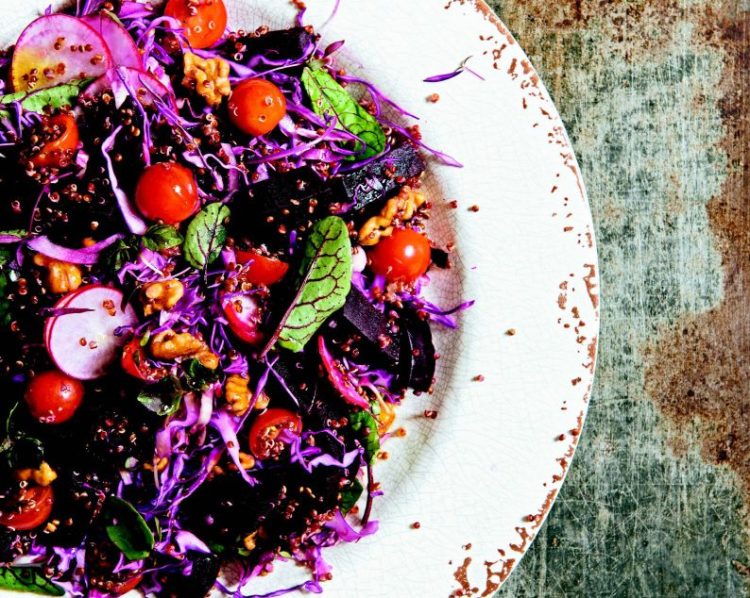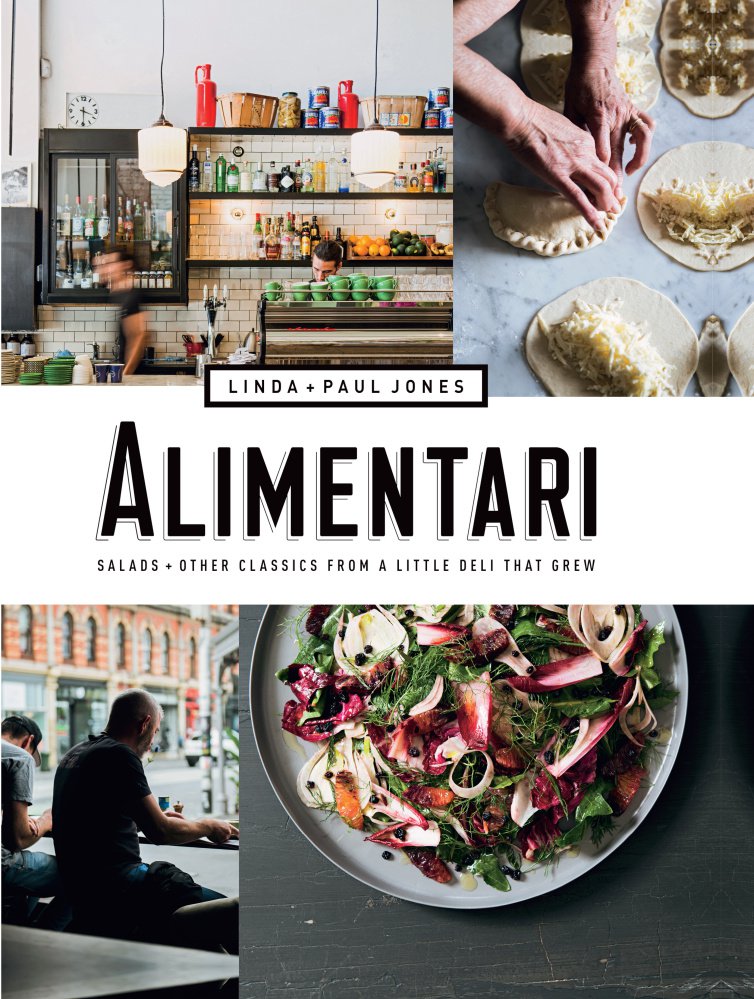“Alimentari: Salads + Other Classics from a Little Deli That Grew.” By Linda and Paul Jones. Hardie Grant Books, 208 pages. $29.99
Not every cookbook has an introduction worth reading, but “Alimentari: Salads + Other Classics from a Little Deli That Grew” has a not-to-be-missed beauty. In it, Linda Jones, who wrote the cookbook with her husband and current creative partner, Paul, details how she and Dolores Napolitano (aka Dee) were inspired to open a rustic, cozy continental deli; found the perfect spot in their neighborhood; and struggled financially before getting it off the ground by the seat of their pants. Six years later, Dee was diagnosed with cancer, and Jones writes a tender tribute to their friendship and the restaurant they built together before Dee’s death in 2010.
I assumed from descriptions of their neighborhood, the cool chick vibe and the funky and obscure recipes and ingredients (agro dolce dressing, shanklish, dukkah, walnut tarator, just to name a few) that this deli must be in Brooklyn. It took online sleuthing to discover Alimentari is in Melbourne, Australia. That search also coughed up Dolores’ last name, which I could not find in the book, not even in the loving introduction where it belonged. On Alimentari’s website her name is spelled Delores, and again, no last name. It’s really lame to get your beloved, dead co-founder’s name wrong on your home page.
That’s the bitchy copy editor in me talking, but the cook in me was happy to try out some of the pretty salads and main dishes. I started with Roast Chicken with Harissa & Preserved Lemon, which looked enticingly tangy on the page but turned out to be nothing special on the plate. As prepared at the low temperature the cookbook suggested (320 degrees F), it was also underdone. I used homemade preserved lemons I had in the fridge already and harissa from a tube, but if I hadn’t, I think I’d still be cooking.
The second recipe I tried, “red salad,” described as “basically a red coleslaw,” was quite pleasant but laborious from start to end. I am a true believer in the improvised salad from the fridge, the kind that takes at best 15 minutes of pulling out ingredients and chopping them. This one involved grinding spices into a baharat, a Middle Eastern spice mix (and name of Portland food truck soon to be bricks and mortar joint). The whole enterprise felt absolutely endless to make, even though I used a mandolin to speed things along.
Also, expensive. I had all the spices on hand, as well as olive oil and tomatoes, but the other main ingredients (red quinoa, beets, red cabbage, radicchio, red onion, radishes and walnuts) cost me $18 (albeit at one of Portland’s higher-end food stores). On the plus side, the recipe yielded so much salad I filled my two largest salad bowls. After tasting it, I knew I liked it, but not enough to want to eat practically a cubic yard of it. I texted family members to ask if they wanted some for lunch, sending along what I thought was an enticing photo and including a description of how “healthful” it was.
“It looks like Medusa’s head in a bowl,” my sister said.
Would I make it again? Maybe if a vegan friend were coming to dinner. But these are the kind of complex recipes that justify my occasional trip to nearby delis I love, like Wild Oats in Brunswick, where the work of bringing together exotic flavors has been done for me. I don’t think this is lazy, but rather, practical.
RED SALAD
Recipe adapted from “Alimentari: Salads + Other Classics from a Little Deli That Grew.” I skipped the baby beet leaves to keep costs down (the store where I was shopping sold them separately from the beets themselves), and I used one lemon to make the dressing. The cooks are Australian so some recipes call for ingredients in grams and liquid ounces.
Serves 4-6 as a starter or light dinner, takes at least 1 hour
11/2 cups walnuts
10.5 ounces red quinoa (eyeballed on the scale at the grocery as about 2/3 of a pound)
400 g beets, trimmed and washed
1/2 red cabbage, shredded
1 head radicchio, finely sliced
1 red onion, finely sliced
1 handful baby beet leaves
6 radishes, finely sliced on a mandoline
9 ounces red cherry tomatoes
DRESSING:
3.5 ounces lemon juice
2 teaspoons salt
1 teaspoon fresh ground pepper
1 tablespoon Baharat
7 ounces olive oil
BAHARAT:
1 tablespoon black peppercorns
1 teaspoon coriander seeds
1 teaspoon cloves
1 teaspoon cumin seeds
1 teaspoon ground nutmeg
1 tablespoon ground allspice
1 tablespoon ground cinnamon
Make the baharat by grinding the whole spices in a spice grinder or clean coffee grinder, then mixing with ground spices. You’ll have extra, reserve it in an airtight jar for another use.
Lightly toast the walnuts in a 300 degree F oven for 12 minutes (or 10, if you’re anxious).
Heat quinoa in 4 cups of water and a pinch of salt until it boils, then turn down and simmer until quinoa is soft. (The recipe advises 15 minutes, mine took 20.)
Cook beets in a saucepan of salted water. Boil, then lower the heat to a simmer and simmer for 1 to 1 1/2 hours until tender. Cool, peel and then cube. (If you wear gloves as the recipe advises you to do, consider yourself a fussbudget.)
Make the dressing by combining the lemon juice, salt, pepper and baharat in a small bowl, then whisk in the oil and adjust the seasonings to taste.
Combine the quinoa, beetroot, walnuts and remaining ingredients in a large bowl with the dressing. Toss to combine, season with salt and pepper and serve.
Mary Pols can be contacted at 791-6456 or at:
Twitter: MaryPols
Send questions/comments to the editors.





Success. Please wait for the page to reload. If the page does not reload within 5 seconds, please refresh the page.
Enter your email and password to access comments.
Hi, to comment on stories you must . This profile is in addition to your subscription and website login.
Already have a commenting profile? .
Invalid username/password.
Please check your email to confirm and complete your registration.
Only subscribers are eligible to post comments. Please subscribe or login first for digital access. Here’s why.
Use the form below to reset your password. When you've submitted your account email, we will send an email with a reset code.